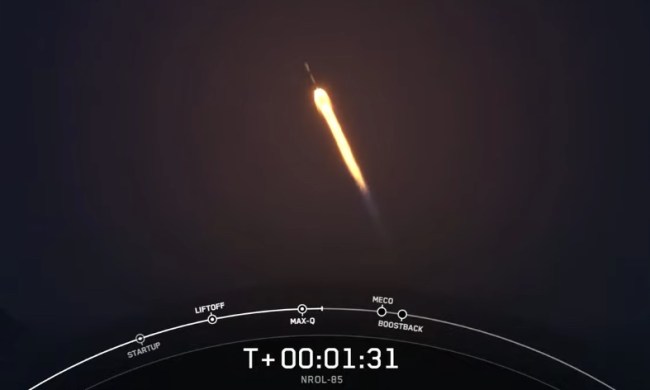SpaceX had success last week with their most difficult ever Falcon Heavy launch, and in this video you can see it happen in unique slow motion. The video was recorded by cinematographer Ryan Chylinski, who spoke with Digital Trends about his project documenting rocket launches for his studio Cosmic Perspective.
As you can imagine, creating a camera which can withstand the epic environment of a launch requires some serious finagling. Long before a launch happens, Chylinski sets up a barrage of cameras near the launchpad, including autonomous ultra-high-speed video cameras, 360 cameras, and still cameras to capture the action from every angle. The cameras are placed on tripods and secured to the ground with tent stakes to make sure they stay in place and upright even when the rocket exhaust washes over them. And as no human could survive close to a launch site, the cameras have to be triggered to record automatically — often using sound.
One of the biggest challenges of capturing video of launches is that it necessitates leaving delicate equipment out and exposed to the elements for days at a time. As launches can frequently be delayed due to weather conditions, the cameras have to be able to withstand heat, sun, rain and wind in the hours before the launch, and they need plenty of power too. “Keeping the cameras active and powered for 12 to 48 hours at a time requires lots of battery capacity and planning,” Chylinski told Digital Trends. “Recently I’ve also rigged a series of solar panels to power some of the more intensive setups.”
Another challenge with this type of high speed video in particular is that the cameras need to be triggered to activate only during the few seconds when the liftoff occurs. “Many of the cameras I use are simply not designed to be triggered externally,” Chylinski explains. So he uses special equipment and even DIYs some parts himself, like the trigger for the camera to begin recording. “Some of the 360 cameras and Polaroid film cameras I use required the design of a ‘mechanical finger’ or robot presser to sense when a rocket launch has begun, drive a motor, and press the button just like we would using our human fingers if we could survive being this close to the launch.”
The results of all this ingenuity are stunning videos of launches, as seen in slow motion and up close. The recordings capture the majesty and wonder of the forces that propel a 1500 ton rocket into space in gorgeous detail, with the aim of raising public interest in space exploration: “Our goal is to show the exquisite scale and beauty of what is happening, to create pause and spark interest, inspiration and the imagination,” Chylinski said.
You can see more of Chylinski’s work and support the project on Kickstarter.



